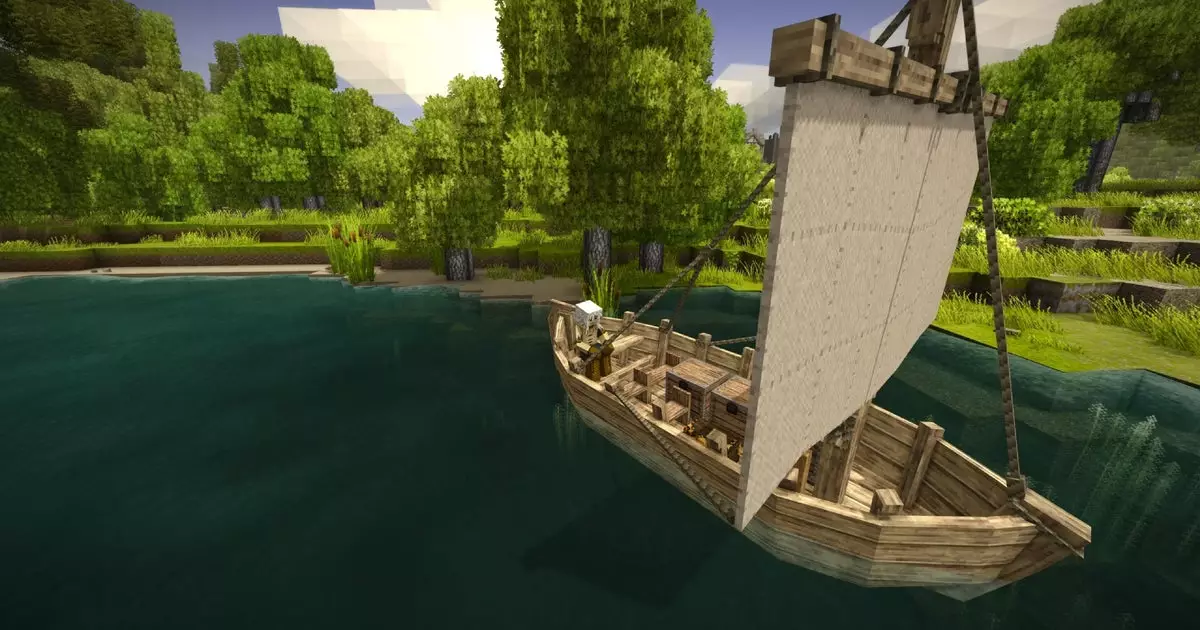The gaming industry often feels like a relentless cycle of rises and falls, with titles emerging to inspire and then fading into obscurity. Yet, amidst the debris of cancelled projects and unmet expectations, some creators refuse to give up. The recent cancellation of Hytale, a highly anticipated Minecraft-inspired sandbox adventure, sent shockwaves through the community. But instead of surrendering, a smaller studio—Vintage Story—has chosen to see opportunity within adversity. They are embarking on a bold venture to craft a novel game mode, inspired by the lost potential of Hytale, aiming to inject fresh life into their own project.
This move exemplifies a profound understanding of the core appeal that makes sandbox games endlessly captivating: the power of imagination, exploration, and storytelling. By deliberately shifting aesthetic themes towards fantasy and RPG elements, Vintage Story is steering its course away from gritty realism into a realm of elves, dwarves, and magical quests. This isn’t just a superficial skin change but a fundamental reinvention of gameplay mechanics, setting the stage for players to experience an adventure that complements their ongoing fantasy fantasies.
Balancing Innovation with Respect for the Original Vision
The developers have been transparent about their intentions to maintain the integrity of Vintage Story’s core identity while simultaneously experimenting with new themes. They emphasize that existing players will not be left behind—its gritty, realistic mechanics and aesthetic foundation will remain intact. Simultaneously, a sub-project team is being assembled to develop this ambitious new mode. The team is small initially, with only a handful of developers, reflecting a cautious but adaptive approach to game design—a testament to their understanding that quality trumps speed.
This strategic decision to build incrementally demonstrates a responsible attitude toward game development. Instead of rushing to produce a hollow copy of Hytale, Vintage Story’s creators aim to craft a supplementary experience that could eventually evolve into a standalone product if it resonates with players. By adopting an open development style—early releases, player feedback, and transparent communication—the team hopes to foster a community-driven process that shapes the game into something truly meaningful.
Transformative Potential of Nostalgia and Innovation
What makes this initiative compelling is not merely the technical aspects—it’s the emotional resonance that underpins it. There is palpable nostalgia for what Hytale represented: a beacon of creativity, community, and unbounded imagination. Vintage Story’s effort to borrow and adapt that spirit reflects a broader desire within the gaming community to keep alive those dreams of adventure and exploration, even if the original project faltered.
However, this approach isn’t without risks. Attempting to combine aspiration with limited resources can sometimes result in a disjointed or superficial experience. Yet, the developers’ emphasis on collaboration, phased growth, and leveraging existing assets reveals a confidence that this hybrid approach can yield a meaningful new experience. The hope is that the new mode won’t just be a cosmetic addition but a foundational stepping stone that revitalizes the entire genre.
In a broader sense, Vintage Story’s initiative signals a shift in how smaller studios perceive setbacks. Instead of retreating or abandoning ambitions, they’re choosing to innovate from within, transforming disappointment into an opportunity for renewed creativity. It illustrates a resilient ethos: that even when a “giant” project like Hytale is lost, the dreams it inspired can still influence new life in unrelated projects.
Championing Community and Creative Continuity
Fundamentally, this decision reflects a respect for the community’s emotional investment. Many players see in these sandbox games more than just gameplay—they see worlds, stories, and shared memories. Vintage Story’s acknowledgment of this commitment shows they understand their audience’s desire not only for entertainment but for a continuation of a shared creative journey.
By explicitly offering transparency, flexibility, and openness to feedback, the developers are fostering a participatory environment. This approach doesn’t merely aim to produce a new game mode; it seeks to cultivate a collaborative cultural space where players feel involved in the evolution of the experience. Such inclusivity is crucial in sandbox environments—where the line between developer and player often blurs—allowing the community to help shape the future of this revitalized fantasy realm.
In essence, Vintage Story’s response to Hytale’s silence is more than a workaround; it’s a statement of resilience, a testament to the enduring power of creative communities to adapt and flourish despite setbacks. It underscores a vital truth in modern game development: that innovative visions are not solely tethered to failed projects but can be reborn through dedicated craftsmanship and collaborative spirit.

